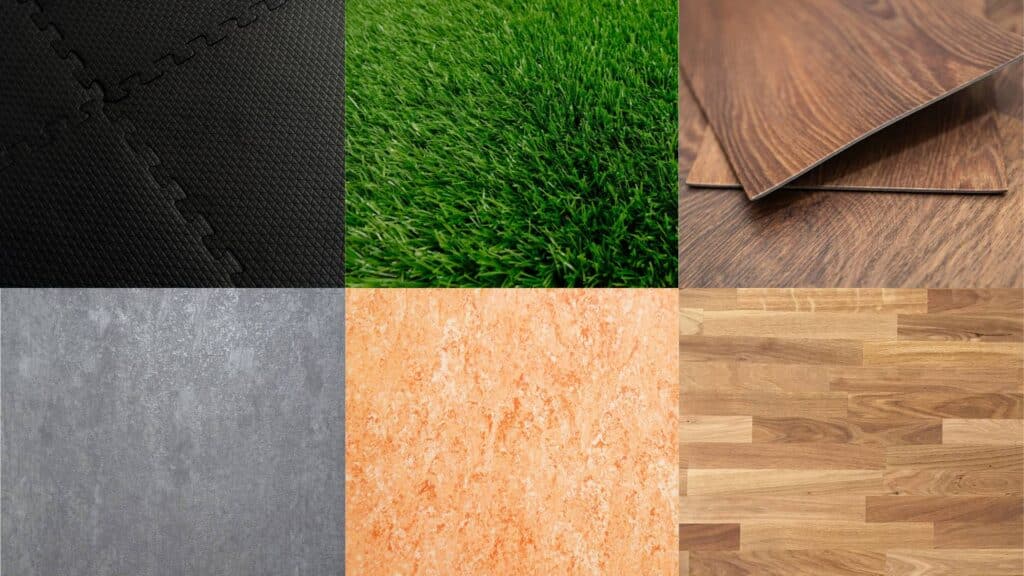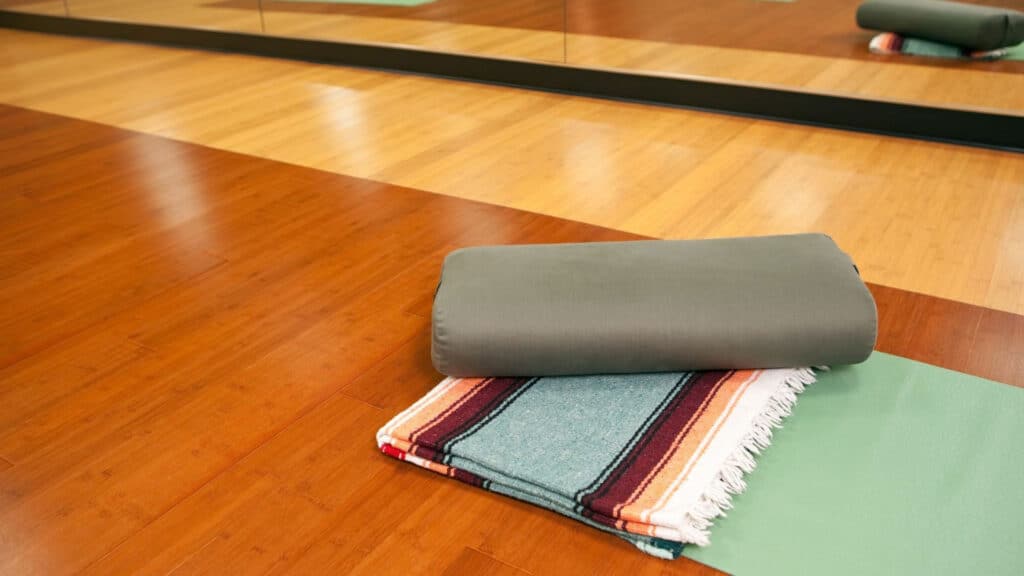Exploring Different Gym Flooring Materials (Intro)
What type of flooring is most suitable in gyms today? There are a variety of gym flooring materials available, both natural and synthetic. To answer the question, we need to determine the intended use of the space. That is, which activities it will be used for, and how it will affect the performance and health of the athlete. Other key factors include its resistance to the damage that heavy equipment can cause – especially in fitness centres; its hygiene level and whether it’s easy to clean; and whether it is of sufficient quality to protect the gym owner from the unwelcome expense of repairs. It is crucial to decide by reviewing all the factors and choosing the most suitable material for your gym floor.
Synthetic Gym Flooring
Synthetic gym flooring materials are flexible, non-slip, and easy to clean. They can be used in combination with other materials, and are more readily available. With a wide range of choices and colours, they provide a practical flooring solution at a more economical cost.

PVC Flooring
Polyvinyl Chloride, or PVC, is among the most preferred synthetic gym flooring materials. PVC floors are used in indoor sports halls, basketball courts, volleyball courts, handball courts and tennis courts. It is easy to lay and can be applied as a single layer or as many layers as you deem necessary to your requirements. It has multiple colour options, with the wood effect option providing a nice natural look. PVC flooring is manufactured with flexibility in mind while being both durable and non-slip. It’s super easy to clean and doesn’t collect dirt. Finally, the per-square-metre price of PVC makes it a great economical choice.
LVT (Luxury Vinyl Tile) Flooring
LVT flooring sits within the multi-layer PVC flooring category. It is preferred due to its natural appearance. Features are very difficult to distinguish from natural stone, marble and wood. It’s available in different thicknesses, appropriate to the area it will be used in. It’s easy to clean, hygienic, and durable. The per-square-meter price makes it an economical option.
Rubber Flooring
Rubber flooring is widely preferred for use in weight training areas of a gym. It protects from weights being dropped, bouncing, and harming an individual; furthermore, it protects the subfloor. Rubber provides a shock-absorbing, sound-proofing, durable surface that is non-slip, and easy to clean. Rubber tiles are generally available in a thickness that ranges from 1 cm to 5 cm, while tile sizes of 40 cm x 40 cm, and 50 cm x 50 cm, are most common. There are several colour options to choose from, to suit any preference. The key advantages of rubber flooring include impact reduction, durability and longevity, flexibility, good grip/non-slip, and low maintenance. While rubber may not be the most economical option for gym flooring materials, it certainly outclasses other materials due to its multi-advantage nature. In the long run, it will prevent the gym owner from having to make costly repairs.
Laminate Flooring
Laminate flooring is a multilayered structure made of resin and compressed sawdust. There are endless colour options and designs that can be printed directly onto it. Laminate flooring has many advantages: It has an average lifespan of 10 years; it’s reliable and affordable; it has excellent shock absorption capacity, minimising accidents and injuries; it’s easy to clean; it’s not easily scratched. It doesn’t require much maintenance and can be painted, making it easy to achieve a fresh look for the entire floor. Laminate flooring is an economical and versatile option.
Natural Gym Flooring Materials
Linoleum Flooring
Linoleum consists of oxidized linseed oil mixed with ground cork, gums and pigments. The material, invented by Frederick Walton in 1860, was one of the most fashionable and widely used floor coverings from the 1870s to the 1960s. For those wanting to move away from plastic, it can be up to 100% natural which, in recent years, has seen a preference for use in green building concepts and eco-certified developments. It doesn’t negatively affect the air quality of the environment in which it’s laid. There are endless colour options and thus colour combinations. It is hygienic, anti-static, and antibacterial. More so, it is waterproof and easily cleaned. Due to its resin content, it is very durable and does not wear out. It provides heat and sound insulation, can be mopped with a dry or wet mop, washed if desired, and easily vacuumed. With all of its green advantages, Linoleum is also an economical flooring solution.
Natural Wood Flooring

One of the first things that come to mind when we imagine an indoor sports hall is its classic parquet floor. It is durable and aesthetically dazzling. Hardwood gym flooring has a subfloor system that aids in rapid impact absorption. Parquet sports flooring, generally made from Maple wood, is produced as a flexible and non-slip surface. It is hygienic and 100% natural. The only negative feature of wood flooring is its high maintenance cost. In particular, scratches are very common and require regular maintenance and cleaning to remain safe. Professional arenas must seek approval from FIBA, FFBB, IHF, WSF, and other governing sports federations. To determine the construction of a wooden sports floor, you must consider which sports and physical activities will take place to determine how much pressure the floor will be required to endure. When considering wooden flooring, it is critical to consider the above factors, both positive and negative, when assessing the build cost and the subsequent maintenance costs.
Laminated Flooring
A little different from wooden parquet, laminated flooring is another option for sports hall flooring. Not to be confused with laminate, laminated parquet is the transformation of natural wood materials into parquet by pressing the material after a conditioning and drying process. Due to this process, laminate flooring becomes resistant to moisture. It is a 100% natural material, with regular maintenance and polishing required. It absorbs sound effectively and has a somewhat justified higher cost per square metre.
Conclusion
As we’ve seen, there are many options for flooring in gyms and sports halls. For the correct choice for your facility, it is vital to consider which activities and sports you will offer, the type and weight of the equipment you intend to install and, perhaps most importantly, the capacity of your budget.
To comment on the article, please proceed to the Telegram post. We encourage you to read our comprehensive article “How To Choose Gym Flooring“.
Disclaimer: The opinions and positions expressed in this publication are those of the authors and collaborators and do not necessarily reflect the views or policies of the professional fitness community.

